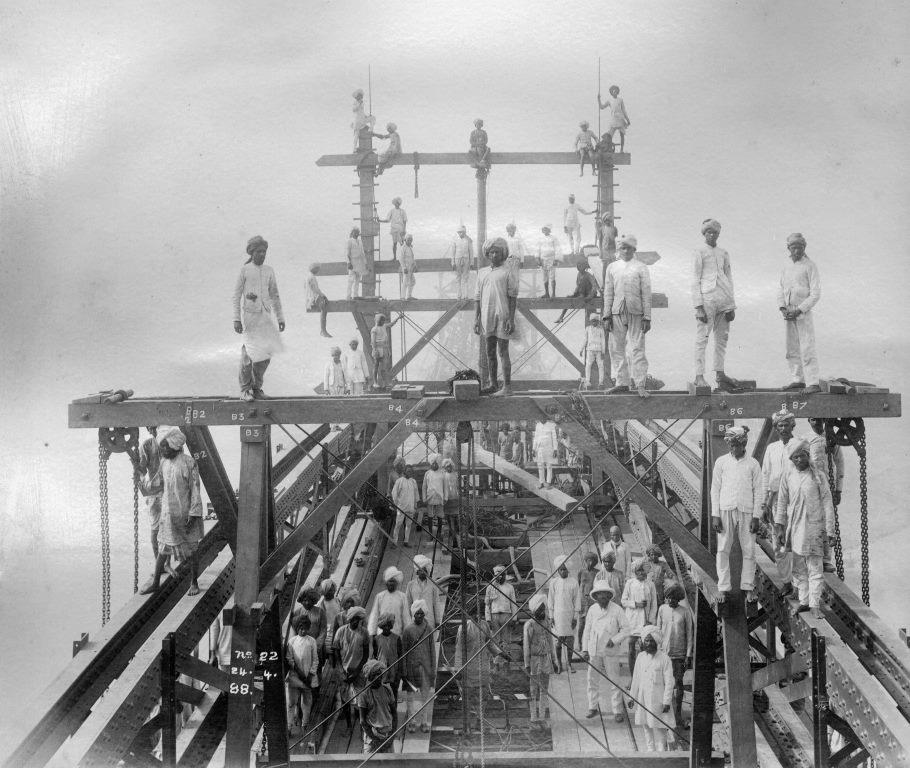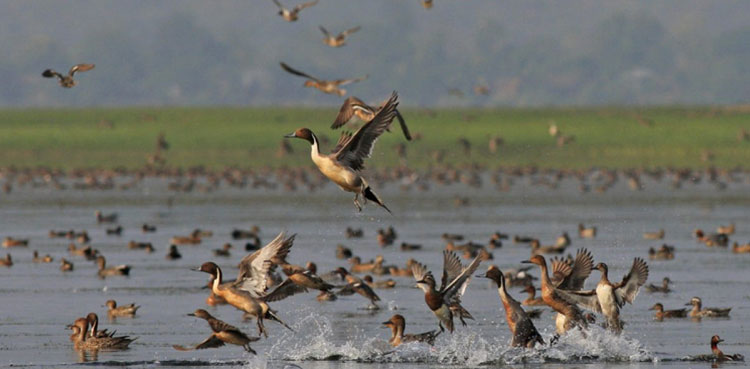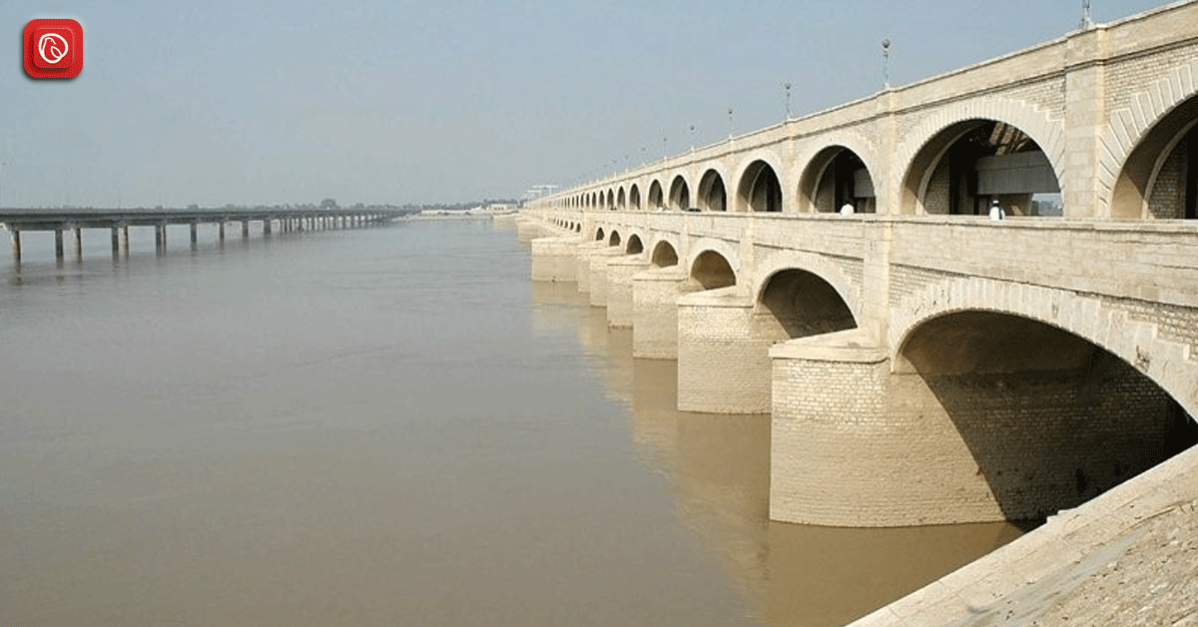Sukkur Barrage, formerly known as Lloyd Barrage, stands proudly on the Indus River, is more than just a hydraulic infrastructure; it’s a lifeline for the arid lands of Sindh, Pakistan. Built during the British Raj from 1923 to 1932, this engineering marvel has not only transformed the landscape but has also played a pivotal role in shaping the agricultural, economic, and ecological facets of the region.
In this detailed guide, Graana.com will delve into the historical roots, architectural features, agricultural impact, rehabilitation efforts, and the role of Sukkur Barrage in supporting wildlife.
Conception and Planning of Sukkur Barrage
The idea of Sukkur Barrage was conceived by Mr. C.A. Fife in 1868, recognising the imperative to harness the waters of the Indus River for agricultural development in the arid lands of Sindh. However, it wasn’t until 1923 that the project received approval during the British Raj. Sir Charlton Harrison, the chief engineer, played a pivotal role in overseeing the overall direction of the project. He ensured that it met the complex irrigation needs of the region.
The planning phase involved considerations for the barrage’s dimensions, the number of outfall gates, and the overall impact on the river’s flow. Sir Arnold Musto, CIE, served as the architect and engineer of the scheme. He contributed to the comprehensive planning that would define the barrage’s construction.
Construction of Sukkur Barrage

The construction of Sukkur Barrage commenced in 1923, with an ambitious goal to transform the landscape and ensure a consistent water supply for the agricultural lands of Sindh. The project faced numerous challenges. This includes the sheer scale of the engineering task, logistical complexities, and the need for precision in the construction of the barrage’s retaining wall and outfall gates.
The Head Works and Canals were completed by 1932, marking the culmination of years of dedicated effort. The inauguration of Sukkur Barrage in 1932 by the 1st Earl of Willingdon, Viceroy of India, was a moment of pride. It signalled the successful realisation of a transformative project that would become the backbone of Pakistan’s irrigation system.
Impact of Sukkur Barrage
Sukkur Barrage, initially named Lloyd Barrage in honour of Sir George Lloyd, the Governor of Bombay, has left an enduring legacy. It is one of the biggest barrages in Pakistan currently. The barrage not only facilitated controlled irrigation but also contributed to the socio-economic development of the region. The network of canals originating from Sukkur Barrage covers vast agricultural lands. This provides a lifeline to communities that depend on the waters of the Indus.
The construction of Sukkur Barrage reshaped the topography of the region. This creates a hydraulic giant that continues to play a crucial role in the lives of millions. Its impact on agriculture, economy, and water management underscores the significance of strategic infrastructure projects in addressing the challenges posed by arid climates and water scarcity.
Rehabilitation Endeavours
Recognising the need for revitalisation, the Government of Pakistan initiated a comprehensive rehabilitation project in November 2004. The task was shouldered by the Pakistan Army Engineering Corps and Frontier Works Organisation (FWO). The rehabilitation work, completed ahead of the deadline in July 2005 at a remarkably low cost of 15 million US dollars, is anticipated to enhance the barrage’s efficiency for an additional 60 to 70 years.
Functionality and Structural Features
Sukkur Barrage serves the dual purpose of controlling water flow in the Indus River for irrigation and flood control. Its significance lies not only in its primary function but also in the vast network it supports. The barrage facilitates water flow through a network of seven canals, collectively covering an astounding 9,923 kilometres. The retaining wall, an engineering marvel, boasts 66 spans (outfall gates), each 18 meters wide and weighing an impressive 50 tons.
Canals and Agricultural Impact
The canals stemming from Sukkur Barrage are the lifelines for agriculture in Sindh. The Nara Canal, the longest of the seven, originates from the barrage. It covers a distance of 930,000 hectares. This canal’s discharge is comparable to the river Thames in London. This makes it a vital source for sustaining agriculture in the region.
The Rohri Canal, slightly shorter but with a higher discharge, cultivates 1,100,000 hectares, It primarily focuses on crops like cotton, wheat, and sugarcane. These canals, both on the left and right banks, ensure perennial irrigation. This is contributing significantly to approximately 25% of the total canal-irrigated area in the country.
Sukkur Barrage Wildlife

Beyond its utilitarian purposes, Sukkur Barrage creates a unique ecosystem that supports wildlife. The barrage’s impact on the region extends beyond its engineering prowess, fostering a unique ecosystem where various species thrive in harmony. From the graceful Indus River dolphins to a vibrant avian community and flourishing fisheries, Sukkur Barrage stands as a testament to the coexistence of human development and the preservation of natural habitats.
The presence of Indus River dolphins upstream of the barrage adds a touch of enchantment to the landscape. Their adaptation to the freshwater environment of the Indus River and reliance on the barrage’s regulated flow highlights the delicate balance between human intervention and the preservation of iconic species.
Sukkur Barrage’s wetlands create an ideal habitat for a diverse range of bird species, attracting both migratory and resident birds. Herons, egrets, cormorants, and various ducks find solace in the wetlands. This is contributing to the rich avian biodiversity supported by the barrage. Birdwatchers and nature enthusiasts are treated to the sight of these winged residents throughout different seasons.

The controlled water flow of the Indus River by Sukkur Barrage has significant implications for the aquatic life. It helps in sustaining diverse fish populations. This not only supports local fisheries but also contributes to the overall biodiversity of the region. The coexistence of wildlife, from dolphins to birds and fish, exemplifies the intricate harmony achieved between human infrastructure and the natural environment at Sukkur Barrage.
Conclusion
Sukkur Barrage, built in 1932, is a crucial structure regulating water flow on the Indus River. It plays a vital role in supporting agriculture, controlling floods, and boosting the local economy. As an engineering marvel, it highlights the significance of effective water management in sustaining communities and fostering economic development in the region.
While not a tourist hotspot, its historical and functional importance makes it an interesting subject for those intrigued by the synergy of engineering and regional growth.
FAQs about Sukkur Barrage
The following are the most frequently asked questions about Sukkur Barrage:
What was Sukkur Barrage’s old name?
Sukkur Barrage originally bore the name Lloyd Barrage, a tribute to Sir George Lloyd, the Governor of Bombay, from the British Raj era.
How many gates does Sukkur Barrage have?
Sukkur Barrage is equipped with an impressive infrastructure featuring a total of 66 spans or outfall gates along its retaining wall. Each gate is 18 meters wide, collectively contributing to the efficient control of water flow in the Indus River.
When was Sukkur Barrage constructed?
Sukkur Barrage was completed in 1932 during the British colonial era. It has since been a key structure in the Indus River system. It is providing water to the surrounding areas for agricultural activities and helping to control floods.
What is the purpose of Sukkur Barrage?
The primary purposes of Sukkur Barrage are water regulation, irrigation, and flood control. It allows for the controlled release of water into the canals that serve the agricultural lands in the region. This is ensuring a steady water supply for crops. Additionally, it helps in mitigating the impact of floods by regulating the flow of water during periods of heavy rainfall.
How does Sukkur Barrage contribute to agriculture?
Sukkur Barrage plays a vital role in supporting agriculture in the Indus Valley. It diverts water from the Indus River into an extensive network of canals, facilitating irrigation for farmlands. This irrigation system allows farmers to cultivate crops and contribute to the agricultural productivity of the region.
What is the length of Sukkur Barrage?
Sukkur Barrage is approximately 1,600 meters (1.6 kilometres) long. It consists of multiple gates and sluices that can be operated to control the flow of water. The structure is a key component of the irrigation infrastructure in the area.
How does Sukkur Barrage impact the local economy?
The barrage significantly contributes to the local economy by supporting agriculture, which is a primary source of livelihood for many in the region. The controlled release of water ensures a stable and reliable water supply for crops. This is leading to increased agricultural production and economic growth.
Is Sukkur Barrage a tourist attraction?
While Sukkur Barrage is primarily an engineering and infrastructure project, it may attract visitors interested in the historical and architectural aspects of such structures. The surrounding area also offers picturesque views of the Indus River. This makes it a potential spot for those interested in natural landscapes. However, it is not typically a major tourist destination.
What was the rehabilitation cost, and who executed the project?
The Pakistan Army Engineering Corps and the Frontier Works Organisation (FWO) took on a significant endeavor to rehabilitate Sukkur Barrage. Impressively, the project was successfully completed before the scheduled deadline in July 2005, with a total cost of just 15 million US dollars.
How has the rehabilitation improved Sukkur Barrage’s efficiency?
The rehabilitation work on Sukkur Barrage, executed by experienced entities like the Pakistan Army Engineering Corps and FWO, is believed to have significantly enhanced the barrage’s efficiency. Experts estimate that this refurbishment will ensure the functionality of the barrage for an additional 60 to 70 years. It has solidified its role as a critical water management infrastructure.
For more information visit, Graana blog.




